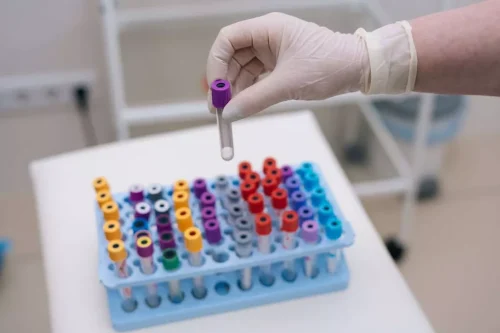
Meetings are widely available at little-to-no cost in most communities. Support groups can be a valuable source of support and can be combined with medication and therapy.

What are the symptoms of alcoholic ketoacidosis?
These symptoms may mimic the normal course of diabetes, so it is important to have a high level of suspicion for DKA whenever you are feeling these symptoms. Contact The Recovery Village Palmer Lake if you have questions about treatment or if you’re ready to get on the path to recovery and end your addiction to alcohol. As rehydration progresses and adequate renal function is established, consider electrolyte replacement, giving particular attention to potassium and magnesium. Fluids alone do not correct AKA as quickly as fluids and carbohydrates together.
Alcoholic Ketoacidosis: Warning Signs and Treatments
- Free fatty acids are removed by the liver, where they primarily undergo oxidation to hydroxybutyric acid and acetoacetate and subsequently are reesterified to triglyceride.
- Free fatty acids are either oxidized to CO2 or ketone bodies (acetoacetate, hydroxybutyrate, and acetone), or they are esterified to triacylglycerol and phospholipid.
- Catecholamines, particularly epinephrine, increase fatty acid release and enhance the rate of hepatic ketogenesis.
- Management and prevention of Alcoholic Ketoacidosis (AKA) strongly rely on making significant lifestyle changes, particularly in relation to alcohol consumption and nutritional intake.
High levels of ketones and high blood glucose levels can mean your diabetes is out of control. If you are diabetic, taking your insulin as prescribed, eating low-sugar meals, monitoring how you feel, and checking both your blood sugar and ketone levels regularly can help you avoid DKA. This condition is characterized by the presence of high levels of ketones in the blood, which are acidic by-products of fat metabolism.
- Acetic acid (an acyl group carrier) is linked with coenzyme A (a thiol) to produce Acetyl-CoA.
- Meetings are widely available at little-to-no cost in most communities.
- People with DKA may also have increased thirst and urination, also called polyuria.
- Patients typically present with non-specific features including nausea, vomiting and generalized abdominal pain.
- Seeking help as soon as symptoms arise reduces your chances of serious complications.
When to Seek Medical Attention
He created the ‘Critically Ill Airway’ course and teaches on numerous courses around the world. He is one of the founders of the FOAM movement (Free Open-Access Medical education) and is co-creator of litfl.com, the RAGE podcast, the Resuscitology course, and the SMACC conference. Note information about the patient’s social situation and the presence of intoxicating agents besides alcohol. This goal can usually be achieved through the administration of dextrose and saline solutions (see Treatment).

Possible Complications

Treatment for alcohol addiction is also necessary to prevent a relapse of alcoholic ketoacidosis. If a person is already malnourished due to alcoholism, they may develop alcoholic alcoholic ketoacidosis ketoacidosis. This can occur as soon as one day after a drinking binge, depending on nutritional status, overall health status, and the amount of alcohol consumed.
- Because sugar is not entering the body’s cells for energy breakdown, the sugar is processed by the kidneys and excreted through the urine.
- Subsequent mismanagement can lead to increasing morbidity and mortality for patients.
- It is unknown why the progression to rare symptoms like coma happens more quickly in some people than others, but those who develop DKA following an infection may be at higher risk.
- You can prevent alcoholic ketoacidosis by limiting your alcohol intake.
- Prolonged used of alcohol can result in cirrhosis, or permanent scarring of the liver.

What are the complications of alcoholic ketoacidosis?

Differential diagnosis
- Alcohol withdrawal, in combination with nausea and vomiting, makes most patients agitated.
- Join 40,000+ People Who Receive Our Newsletter Get valuable resources on addiction, recovery, wellness, and our treatments delivered directly to your inbox.
- If you can’t eat for a day or more, your liver will use up its stored-up glucose, which is a type of sugar.
- Additionally, clinicians assess for symptoms like agitation, confusion, and decreased alertness, which may indicate severe acidosis.
- Evaluate the patient for signs of alcohol withdrawal syndrome, which may include tremors, agitation, diaphoresis, tachycardia, hypertension, seizures, or delirium.
- However, the long-term prognosis depends on the severity of the underlying alcohol abuse disorder.


